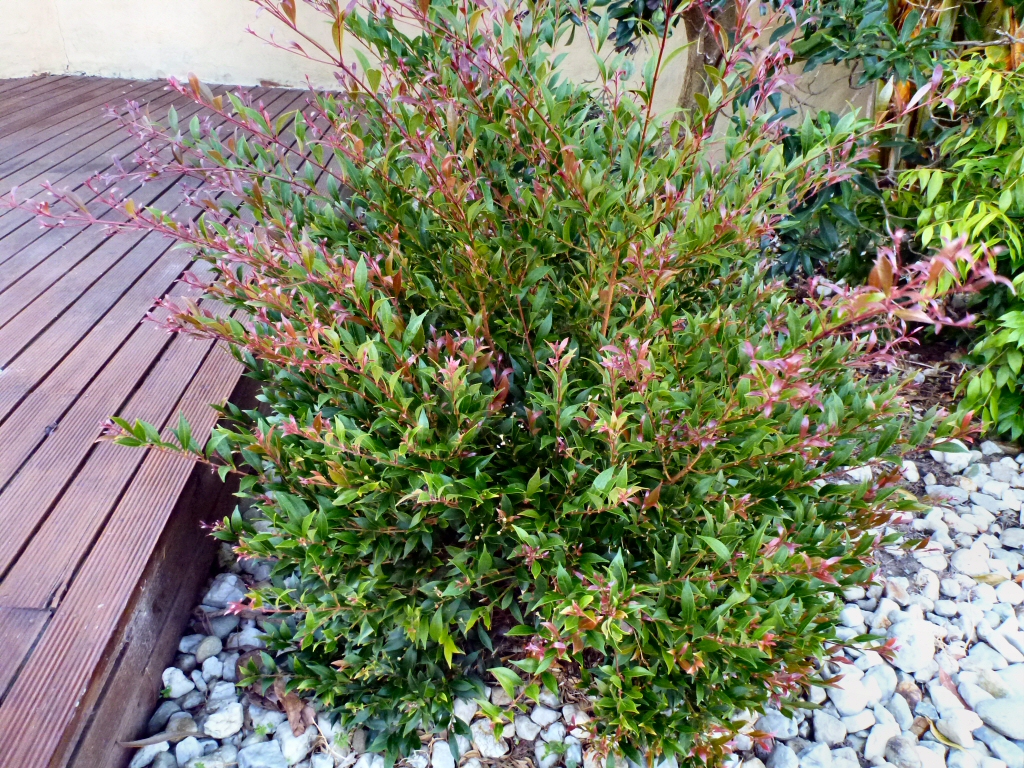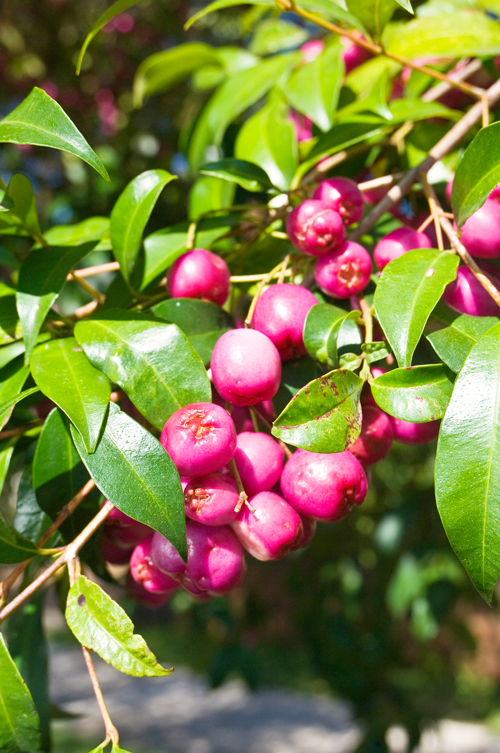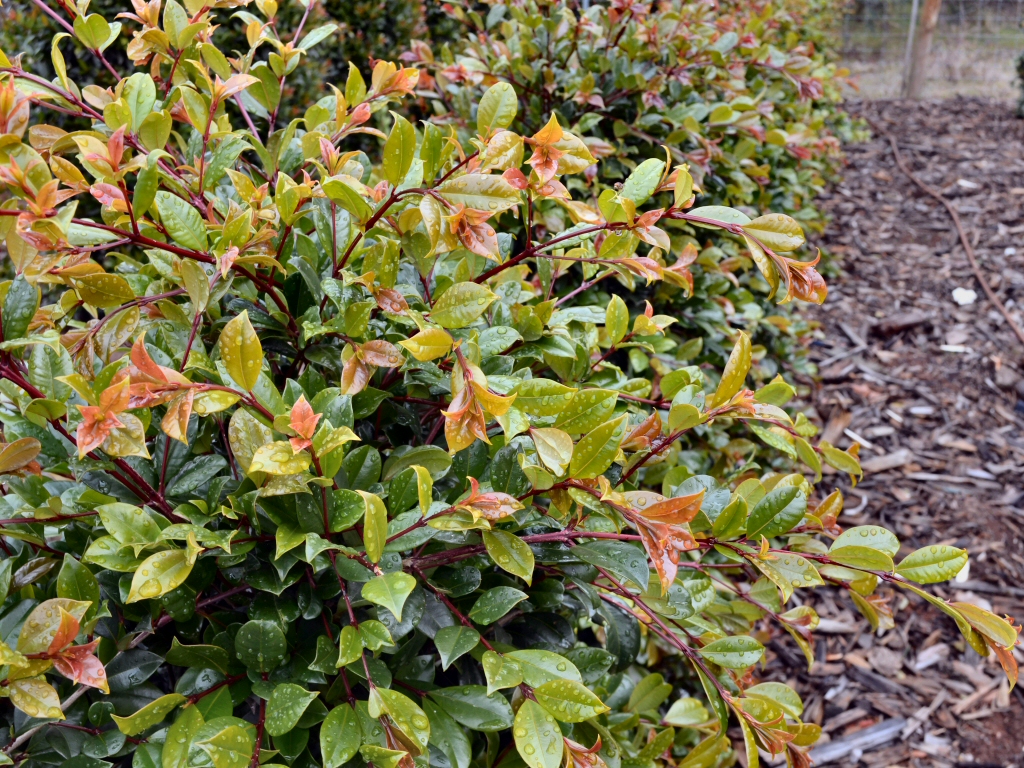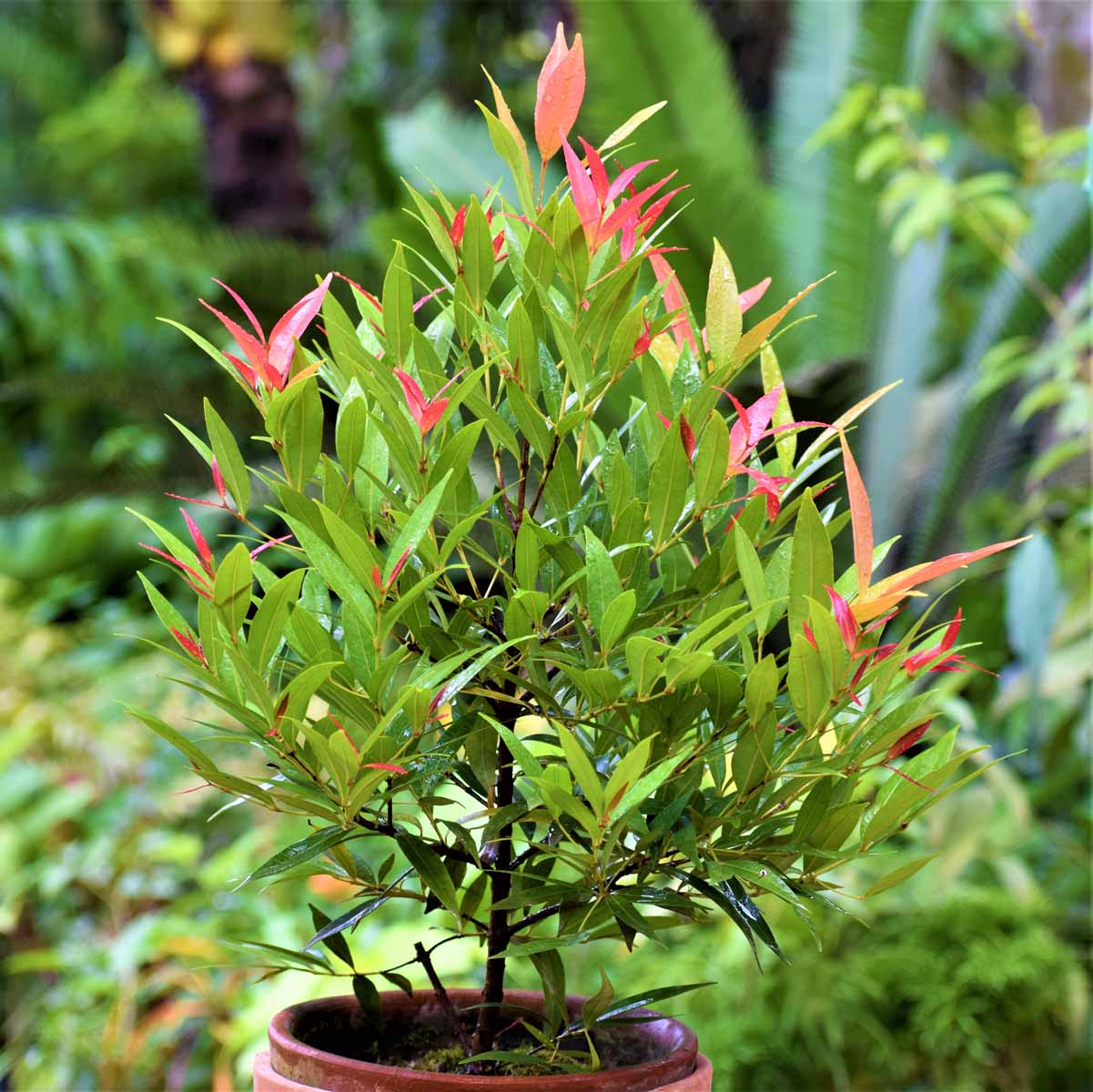
Lilly Pilly Backyard Bliss Westlake Nursery
Where Should I Plant My Lilly Pilly? Lilly pillies prefer good fertile moist soil but will still thrive in drought, full sun or semi shade and will tolerate frosts, sandy soils and coastal conditions. Lilly pillies don't do well in wet areas so make sure there is adequate drainage.

Serenity Nursery Blog Pruning Standard Lilly Pilly...
Lilly Pillys are popular Australian natives that grow in a variety of conditions and soil types. They're commonly grown as hedges and make perfect screening plants. Written by: Annette Hird Last Updated: September 25, 2023 2 Comments There are around 60 different Lilly Pilly varieties that are native to Australia and Southeast Asia.

Syzygium smithii LILLY PILLY Burringbar Rainforest Nursery
Lilly Pillies are hardy plants that are native to Australia. They're commonly grown as hedges and make perfect screening plants. Although these plants are quite tough, there are certain problems, pests and diseases that you may come across. In this article, we discuss these in detail and give you some suggestions on how to fix them.

The Lilly Pilly All You Need to Know About This Native Australian Hedge
Lilly Pilly, also known as Syzygium and Acmena, are a group of evergreen shrubs and small trees that are native to Australia and Papua New Guinea. They are popular for their attractive foliage, colourful berries, and versatility in the garden. There are many different varieties of Lilly Pillys, each with their own unique characteristics.

Syzygium (Lilly Pilly) Plant
Horticulturalist Helen Young recommends 'Cascade' lilly pilly as a hedging plant, not just for its robust performance and fast growth, but for its fat, pink powderpuff flowers in summer, its flushes of pink to crimson new growth and its masses of crimson berry fruit, which is suitable for jams and jellies.It has a gently weeping style of growing - lovely for an informal hedge or shaped into.

Syzygium smithii Wikipedia
It shares the common name "lilly pilly" with several other plants.It is planted as shrubs or hedgerows, and features: rough, woody bark; cream and green smooth, waxy leaves; flushes of pink new growth; and white to maroon edible berries. Unpruned, it will grow about 3-5 m (9.8-16.4 ft) tall in the garden. Taxonomy

Acmena smithii Lilly Pilly Gardening With Angus
The lilly pilly is an extremely popular Australian plant, with a distinctly tropical look and glossy mid-green adult leaves. What you need to know about a lilly pilly Name: lilly pilly, riberry, bush or brush cherry. Syzygium species and cvs, also Acmena cvs and Waterhousia sp. Height: 1-10m+, but can be clipped to size. Foliage: typically glossy.

The Lilly Pilly All You Need to Know About This Native Australian Hedge
The Lilly Pilly plant is a fantastic tropical, ornamental native, with some varieties growing delicious little fruits. This fantastic plant can grow quite large in the wild, but there are also many dwarf varieties you can grow at home. With wonderfully dense foliage, many varieties also make for a perfect lilly pilly hedge.

Best Lilly Pilly Varieties Burke's Backyard
Lilly Pilly plants, known botanically as Syzygium or Acmena species, share several common features that make them a star attraction in any garden. First, they are evergreen, ensuring a year-round display of vitality that injects an extra spark into your garden landscape.

How To Grow And Care For A Lilly Pilly Bunnings Australia
Enjoy up to 90% off only today. Best deals in Australia. Worry-free post-sales guarantee! Discover unbeatable deals and discounts on the Temu App. Download Now & Save Big!

Lilly Pilly Lilly Pilly
Planting The best time to plant lilly pillies is during spring or autumn when the weather is mild. This allows the plants to establish their roots without extreme heat or cold. When planting, make sure to space the plants according to the variety's size.

Fruit Warehouse Lilly Pilly ( Acmena smithii, Eugenia smithii )
The lilly pilly is one of the most popular plants in Australia today, particularly for hedging and topiary. Lilly pillies are evergreen rainforest plants with glossy green leaves. Many varieties have flushes of colourful new growth, ranging from brilliant pink to a red-brown.

Syzygium australe ‘Resilience’ Lilly Pilly Gardening With Angus
Cutting and propagating. Using plant cuttings is a quicker and more reliable method of propagating lilly pillies. Take clean, 10cm-long sections of new growth using grafting knife or secateurs. Trim the top leaves and remove these from the lower half to minimise moisture loss. To encourage root development, dip the cut end into rooting hormone.

Syzygium (Lilly Pilly) Plant
Somewhat confusingly, there are three genera of plants commonly called Lilly Pillies: Acmena, Syzygium and Waterhousea. In addition, there are also quite a few different cultivars and hybrids that have become popular across the country. Choosing a Lilly Pilly Variety Syzygium Australe Lilly Pilly

Lilly Pilly Lilly pilly, Plants, Photography
Lilly Pilly flowers vary in size from small and insignificant to large and pom-pom like! If the flowers aren't trimmed off (which commonly happens on many Lilly Pilly hedges) they'll form into purple/magenta berries. While fruit from all Lilly Pilly plants is edible, some are more tasty than others. If you want to grow Lilly Pilly to harvest the berries for eating, choose Syzgium australe.

Lilly Pilly Resilience Syzygium australe Evergreen Growers
Pruning Lilly Pillys is an important part of maintaining their shape and encouraging healthy growth. There are a few key tips to keep in mind when pruning Lilly Pillys: Use sharp, clean pruning tools to ensure clean cuts and avoid damaging the plant. Prune Lilly Pilly plants in late winter to early spring, before new growth begins.